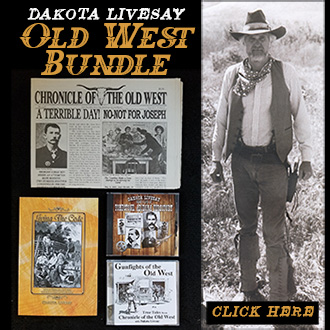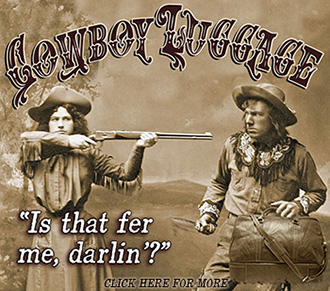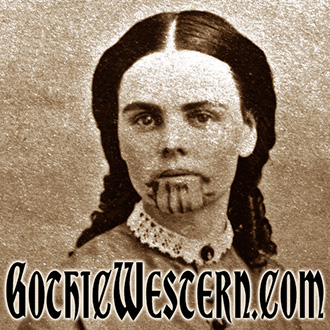SILVER SCREEN COWBOY PROJECT
Boy was I taken back to the days of yesteryear as I attended the Silver Screen Project Show put on by Marvin O’Dell and friends.
This is a multi-media show about the heyday of the “B” and TV Westerns, with film clips, photos, l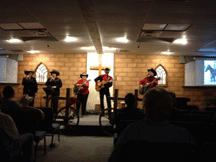 ive songs and commentary. Everyone was covered from Tom Mix to Roy Rogers. Incidentally, Tom and Roy weren’t the first and last of the B-Western heroes, they’re just two of my favorites.
ive songs and commentary. Everyone was covered from Tom Mix to Roy Rogers. Incidentally, Tom and Roy weren’t the first and last of the B-Western heroes, they’re just two of my favorites.
Incidentally, they take their show on the road. If you would be interested in their performing in your area, contact Marvin O’Dell at meoteo@aol.com.
I’m working on getting them up in the White Mountains of Arizona in August.
TIME ZONES
Have you ever wondered how time zones came about? Well, wonder no more. All you have to do is to click on the video 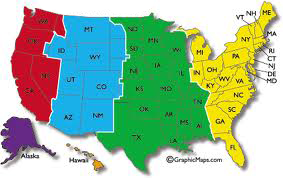 link below and you’ll know the whole scoop.
link below and you’ll know the whole scoop.
http://www.youtube.com/watch?v=5EKHRnnonxE
FESTIVAL OF THE WEST
A couple of weeks ago I said I had talked to Mary Brown, the head wrangler for Festival of the West and she said to keep an eye on th eir web site because something exciting was going to happen.
eir web site because something exciting was going to happen.
Last night I talked to Jim Brown…Mary’s husband…and he told me to take a look at their web site.
So, when I got back home I did just that.
It seems they have put together some investors and the event is returning in March of 2013. Right now they’re looking at Scottsdale, Arizona’s WestWorld for the venue, but that may change.
They promise the 2013 event will be bigger than ever.
You may want to visit their web site yourself. It’s: www.festivalofthewest.com.
CELEBRATION OF COWBOY MUSIC
Saturday, April 28 and Sunday, April 29, the Arizona Chapter of the Western Music Association is putting on a celebration of 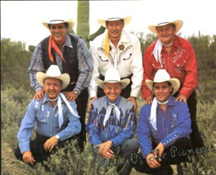 cowboy music at Old Tucson studios in Tucson, Arizona.
cowboy music at Old Tucson studios in Tucson, Arizona.
Throughout each day, in addition to Old Tucson’s signature shows and attractions, Western Music Association luminaries will perform on multiple stages. Scheduled artists include: The Sons of the Pioneers, The Bill Ganz Western Band, Miss Devon and The Outlaw, Jon Messenger, Bill Barwick, Keeter Stuart, Mountain Saddle Band, The Tumbling Tumbleweeds, Kristyn Harris, David Rychener and Call of the West!
For more information go to: www.OldTucson.com
Incidentally, the picture is of the Sons of the Pioneers.
THE VIRGINIAN
Today is the 78th birthday o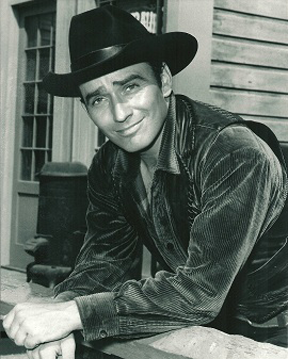 f James Drury, TVs Virginian. The Virginian was the first 90-minute color western TV series. It aired from 1962-1971, and was the third longest running western series in the history of television.
f James Drury, TVs Virginian. The Virginian was the first 90-minute color western TV series. It aired from 1962-1971, and was the third longest running western series in the history of television.
The TV show was an adaptation of the 1902 Owen Wister western novel, “The Virginian, A Horseman of the Plains.”
It’s interesting that in both Owen Wister’s novel and the TV show, the lead character was never given a name other than “Virginian.”
The fact that no one knew his real name added mystery to the character.
The two pictures are of James at the time of the Virginian’s 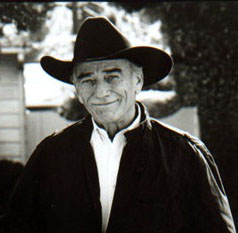 TV series and today.
TV series and today.
SILVER SCREEN PROJECT
There’s an interesting classic western movie event taking place on April 29. It’s The Silver Screen C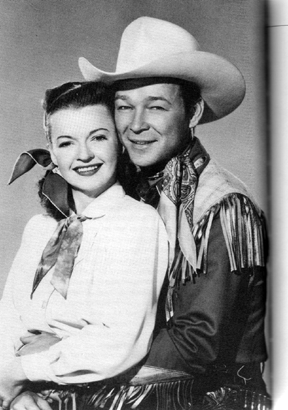 owboy Project Show “Live” highlighting the movie cowboys from the B-Westerns of the 30’s, 40’s and 50’s.
owboy Project Show “Live” highlighting the movie cowboys from the B-Westerns of the 30’s, 40’s and 50’s.
This will be a multi-media event as the attendees take a nostalgic ride back to the time of the B-Western cowboys.
The event takes place at Calvary Chapel in Casa Grand, Arizona. For tickets and more information, call 520/705-5901.
We’re planning on being there.
OLD TUCSON STUDIOS II
One of the p erformers at Old Tucson Studios was our friend Rob Doudell, who’s the spitin’ image of Gabby Hayes.
erformers at Old Tucson Studios was our friend Rob Doudell, who’s the spitin’ image of Gabby Hayes.
Although we’ve been there before to do interviews for our radio show and attend a Western Music Association event, this is the first time I’ve spent any time there…at least not three days.
Old Tucson Studios is a fun place to go, even if you aren’t a tenderfoot. As a bonus, everyone who works there is always friendly and helpful.
OLD TUCSON STUDIOS
We’re presently at Tucson, Arizona attending the Old Tucson Studios Wild West Weekend.
There are gunfights…right next to our booth…stagecoach rides and about everything else Old West.
Right across from us is a donkey and mule. They not only add to the visual ambiance, they also provide the aroma of the Old West.
Incidentally, Sourdough Slim is our own personal entertainment.
Do stop by if you’re in the area
WILD WEST DAYS
We’re packing to head down to Tucson, Arizona and Old Tucson Studios for Tucson Studios’ Wild West Days. At one time they were the location of several John Wayne movies and High Chaparral. Here’s how they describe the event:
“Get ready for a rip r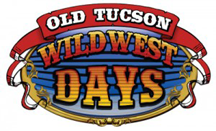 oarin’ good time as Old Tucson presents Wild West Days – a salute to southwestern History, Heritage and Culture on Friday, March 30 thru Sunday, April 1, 2012! If you’re looking for an experience to remember, don’t miss the 3rd Annual Wild West Days! This three-day festival celebrates Old Tucson’s emergence as Southern Arizona’s destination for showcasing local History, Culture and Heritage in the western tradition. This exciting event pleases all ages with an array of daily educational presentations as well as exciting entertainment and activities.”
oarin’ good time as Old Tucson presents Wild West Days – a salute to southwestern History, Heritage and Culture on Friday, March 30 thru Sunday, April 1, 2012! If you’re looking for an experience to remember, don’t miss the 3rd Annual Wild West Days! This three-day festival celebrates Old Tucson’s emergence as Southern Arizona’s destination for showcasing local History, Culture and Heritage in the western tradition. This exciting event pleases all ages with an array of daily educational presentations as well as exciting entertainment and activities.”
If you’re going to be in the area stop by and say HI!
Here’s a link to their web site: www.oldtucson.com
GOOD SAM RALLY
I spent the weekend in Pho enix at the Good Sam National Rally. I did three presentations to the attendees. At each presentation all the chairs in the tent were filled. There were about a thousand people in total who heard the presentations.
enix at the Good Sam National Rally. I did three presentations to the attendees. At each presentation all the chairs in the tent were filled. There were about a thousand people in total who heard the presentations.
I did one presentation on what it was like to be a pioneer in 1845 coming out west. The other two were about what a wrangler experienced on an 1869 cattle drive from Texas to Kansas.
It always amazes and excites me how people enjoy the history of our American West…as you do.
WYATT’S BIRTHDAY
Boy, did I goof up. B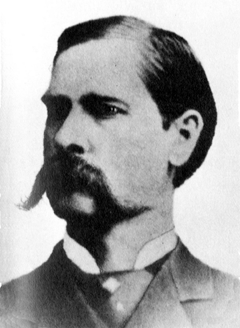 ack on the 19th I posted several special events that took place this week back in the Old West. And I left out an event that took place on that very day back in 1848. It was an event that’s particularly important to fans of the OK Corral Shootout.
ack on the 19th I posted several special events that took place this week back in the Old West. And I left out an event that took place on that very day back in 1848. It was an event that’s particularly important to fans of the OK Corral Shootout.
And I heard about it from several people too.
What was the event? It was the birth of Wyatt Berry Stapp Earp, or just Wyatt Earp to all his close friends.
Sorry Wyatt.
IMPORTANT WEEK IN OLD WEST
This is an important week in the Old West. The following events took place:
1823 – Dime novelist Ned Buntline was born.
novelist Ned Buntline was born.
1834 – Explorer John Wesley Powell was born.
1852 – Wells Fargo was established.
1864 – Artist Charlie Russell was born.
1882 – The first cowboy movie star “Bronco Billy” Anderson was born.
1908 – Writer Louis L’Amour was born.
Incidentally, the picture is of Ned Buntline.
JIM BRIDGER BORN
On this date back in 1804 that great mountain man Jim Bridger was born.
At the age of 20 Jim headed west along the routes that Lewis and Clark had pioneered. At the age of 21 h e was the first white to see the Great Salt Lake…Incidentally; he thought it was the Pacific Ocean.
e was the first white to see the Great Salt Lake…Incidentally; he thought it was the Pacific Ocean.
Getting married to the daughter of a Flathead Indian Chief, he decided to settle down and started a trading post, founding Fort Bridger along the Oregon Trail in Wyoming.
At the age of 64 with eyesight failing and rheumatism, he retired in Westport, Missouri and died at the age of 76 on July 17, 1881.
NAMING OF SHOW LOW
I live in the northeastern part of Arizona in the White Mountains. The name of the town where I live is Show Low. How the name came about is a very interesting history.
 To hear that story go to: http://www.youtube.com/watch?v=YCJ4vUTc4sY
To hear that story go to: http://www.youtube.com/watch?v=YCJ4vUTc4sY
MAX BRAND
On this date back in 1919 western story novelist Max Brand published his first novel. Max Brand was only one of 21 pen names that Frederick Faust wrote under.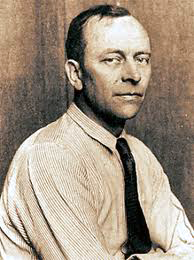
He wrote under pen names because he was embarrassed about writing pulp fiction.
Frederick claimed to dislike the American West and spent most of his adult life in Europe. And he made no pretense to writing historically accurate western novels. He wrote about the west of his imagination and he could tell a great story.
During his life Frederick Faust wrote more than 500 western serials and short stories.
Do we, as fans of the Old West, require more authentic fiction than a century ago? If Max Brand were an unpublished author today, do you think he could find a publisher?
THE PROSPECTOR & THE GUNFIGHTER
Here’s a story with not one, but five lessons for each of us:
An old prospector shuffled into town leading a tired old mule. The old man headed straight for the only saloon to clear his parched throat.
He walked up and tied his old mule to the hitch rail. As he stood there, brushing some of the dust from his face and clothes, a young gunslinger stepped out of the saloon with a gun in one hand and a bottle of whiskey in the other.
The young gunslinger looked at the old man and laughed, saying, “Hey old man, have you ever danced?”
The old man looked up at the gunslinger and said, “No, I never did dance. Never really wanted to.”
A crowd had gathered as the gunslinger grinned and said, “Well, you old fool, you’re gonna dance now,” and started shooting at the old man’s feet.
The old prospector — not wanting to get a toe blown off — started hopping around like a flea on a hot skillet. Everybody was laughing, fit to be tied.
When his last bullet had been fired, the young gunslinger, still laughing, holstered his gun and turned around to go back into the saloon.
The old man turned to his pack mule, pulled out a double-barreled shotgun, and cocked both hammers.
The loud clicks carried clearly through the desert air. The crowd stopped laughing immediately.
The young gunslinger heard the sounds too, and he turned around very slowly. The silence was almost deafening.
The crowd watched as the young gunman stared at the old timer and the large gaping holes of those twin barrels.
The barrels of the shotgun never wavered in the old man’s hands, as he quietly said, “Son, have you ever kissed a mule’s ass?”
The gunslinger swallowed hard and said, “No sir. But — I’ve always wanted to.”
There are a few lessons for us all here:
1 – Never be arrogant.
2 – Don’t waste ammunition.
3 – Whiskey makes you think you’re smarter than you are.
4 – Always, always make sure you know who has the power.
5 – Don’t mess with old men; they didn’t get old by being stupid.
SASS National Championship
 There’s a great event going on right now in Phoenix, Arizona. It’s the Single Action Shooting Society’s Winter Range. This is the SASS National Championships.
There’s a great event going on right now in Phoenix, Arizona. It’s the Single Action Shooting Society’s Winter Range. This is the SASS National Championships.
It actually takes place at the Ben Avery Shooting Facility located at 4044 W. Black Canyon Blvd.
If you haven’t attended a SASS event, even as a spectator, you’re missing out on a lot of Old West fun.
Not only will you see close to a thousand men, women and children in Old West costumes, there are a number of vendors.
The event is taking place right now. And will continue until Sunday, February 26. The best time to go is over the weekend. Sunny, I, along with Dog Jake will be there Saturday. If you see us, say “HI!”
Incidentally, you’ll recognize us. We’ll be the couple being led by an American Border Collie.
GOLDEN AGE THEATER
Did we ever have a fun time Saturday evening at the Golden Age Theater on Hollywood Blvd, in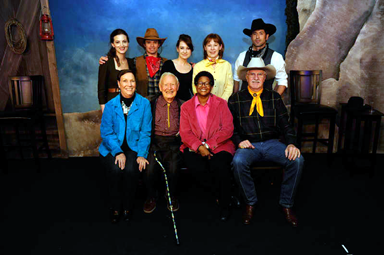 the city of that same name.
the city of that same name.
A cast of characters…The picture shows the cast. Sunny and I were not part of the cast…performed a pulp fiction book by L. Ron Hubbard as it would have been done back in the radio drama days. There were sound effects and everything. It was just amazing. If you’re ever in Southern California over a weekend, you have to check out this event. Their web site is: http://www.goldenagetheater.com/
Incidentally, on various nights they perform westerns, mystery and science fiction stories.
CALICO GHOST TOWN
Once again we’re pac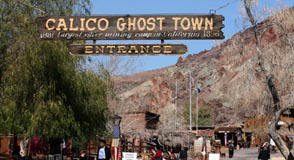 king for another trip. This one is to Southern California.
king for another trip. This one is to Southern California.
I don’t know how may of you are aware of an Old West venue in Barstow, California called Calico Ghost Town. Calico is neat Old West town that was originally a mining town. We’ll be stopping by there and do a conversation for our weekly show about the unique origins of the town and what it is today.
Then we’ll be heading on over to another town you may just have heard about. It’s called Hollywood. We’ll be going to the Golden Age Theater and see a performance of a western old time radio show. This should be fun and interesting.
LOUIS L’AMOUR CONTEST
 I sure hope everyone is checking out the Louis L’Amour Trivia Contest. Each month we have a trivia question about Louis L’Amour and his writing.
I sure hope everyone is checking out the Louis L’Amour Trivia Contest. Each month we have a trivia question about Louis L’Amour and his writing.
We have a monthly winner with a prize of Louis L’Amour logo merchandise. Then, at the end of the year all of the monthly winners are entered in a drawing for a complete collection of Louis L’Amour’s 120 books valued at $625.
Last month’s winner was Kay Lettner of Port Richey, Florida.
To enter just click on the Louis L’Amour plank above. As they say, “If you don’t enter, you can’t win.
HORSELESS CARRIAGE
Lorelei’s comment about missing the “horseless” carriage, and how pioneers couldn’t carry all their household goods when they left the East was interesting.
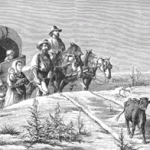 Did you know that, although the dimensions were different, the square feet of the bed of a covered wagon is about the same as the square feet of today’s California king bed?
Did you know that, although the dimensions were different, the square feet of the bed of a covered wagon is about the same as the square feet of today’s California king bed?
Can you imagine putting everything you own and the food you’ll need for the next few months on a California king bed?
Another interesting piece of trivia: When the wagons left St. Joseph, Missouri they were inevitably overloaded. Within a few miles down the road the pioneers would start throwing things out. Scavengers would follow each wagon train; pick up the discards; take the back to St. Joseph; and sell them to the next wagon train.
PIONEER MEDICAL CURES
Mark from Florida says the thing he would miss most as a pioneer is proper medical care.
Some of the pi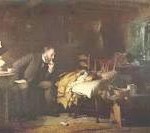 oneer’s “cures” were a bit crazy. When someone was bitten by a snake, a poultice of warm manure was applied on the bite area. Coal oil cured dandruff. And for measles, there was nothing better than a well-cooked mouse.
oneer’s “cures” were a bit crazy. When someone was bitten by a snake, a poultice of warm manure was applied on the bite area. Coal oil cured dandruff. And for measles, there was nothing better than a well-cooked mouse.
WOULD YOU LIKE TO BE A SETTLER?
I just got my computer back from the shop…A virus hijacked it. In addition to that the screen on my iphone turned black. I’m waiting for a replacement. To add to all this, it snowed last night and my Direct TV dish i s covered in snow, blocking the signal.
s covered in snow, blocking the signal.
Have you ever wondered what it would have been like on the Kansas frontier spending weeks and even months with no contact with the outside world? And when it was time to go into town to get supplies it was usually the man. The woman had to say home and take care of the animals.
If you were transported back to the Old West as a pioneer, what do you think you would miss the most?
GROUNDHOG DAY
Today, February 2, is Groundhog Day. It’s the day Punxatawney Phil supposedly comes out to see if he can see his shadow. This i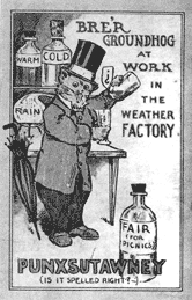 s a ritual that has taken place here in the States since 1887. It seems to be strictly an eastern thing. But because our western pioneers were so attached to the earth with farming and cattle raising, I’ve often wondered if people on the frontier used a groundhog to tell the weather.
s a ritual that has taken place here in the States since 1887. It seems to be strictly an eastern thing. But because our western pioneers were so attached to the earth with farming and cattle raising, I’ve often wondered if people on the frontier used a groundhog to tell the weather.
Incidentally, since 1887 Phil has seen his shadow 99 times, not seen it 16 times, and there are 9 years with no record. How well has he done? Phil has forecasted the weather correctly only 39 percent of the time.
Sorry Phil, I’ll stick with my weatherman. He does a slightly better job.


